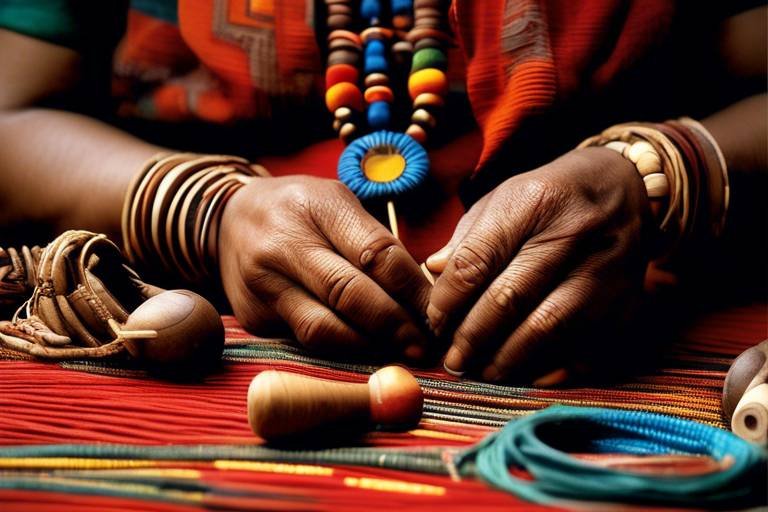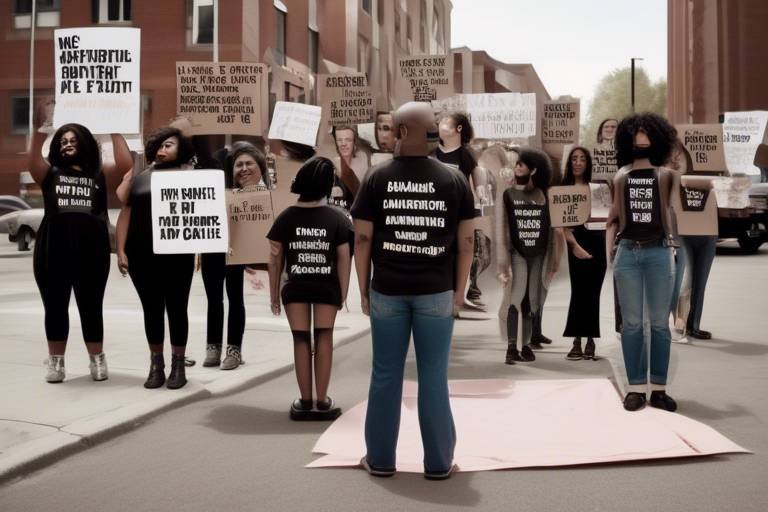The Role of Art in Shaping Cultural Narratives
Art has always held a powerful influence over the shaping of cultural narratives, acting as a mirror that reflects the values, beliefs, and traditions of societies throughout history. Through various artistic forms, individuals and communities have been able to express their identities, share historical reflections, provide social commentary, preserve traditions, engage in global exchanges, convey political symbolism, involve communities, and evolve perspectives.
One of the most significant aspects of art is its ability to serve as an expression of identity. Through paintings, sculptures, music, and performances, artists convey their unique perspectives, experiences, and cultural backgrounds, contributing to the diverse tapestry of human expression.
Artifacts and artworks serve as historical reflections, offering glimpses into the past civilizations and societies. These visual representations document the events, traditions, and norms of bygone eras, providing invaluable insights into the cultural narratives that have shaped our present reality.
Artists often use their creative talents to provide social commentary on pressing issues, challenging societal norms and sparking conversations that influence cultural narratives. By addressing topics such as inequality, discrimination, and environmental concerns, art becomes a catalyst for change and progress.
Art plays a crucial role in preserving cultural traditions, ensuring that practices such as music, dance, and visual arts are passed down through generations. By keeping these traditions alive, communities can maintain a connection to their heritage and celebrate the narratives that define their collective identity.
Global artistic exchanges foster cross-cultural understanding and appreciation, enriching cultural narratives by introducing diverse perspectives and creative influences. Through collaborations and interactions between artists from different backgrounds, new forms of expression emerge, contributing to a more interconnected and inclusive global culture.
Political symbolism in art is a potent force that shapes cultural narratives by visually representing ideologies, movements, and resistance against social injustices. Artists use their work to challenge authority, advocate for change, and inspire activism, leaving a lasting impact on the collective consciousness of society.
Community engagement through art initiatives empowers individuals to actively participate in shaping the cultural narrative of their society. By involving communities in creative projects and storytelling, art becomes a tool for unity, empowerment, and social cohesion, fostering a sense of belonging and shared identity.
The evolution of perspectives in art reflects the changing values and beliefs of a society, influencing cultural narratives by challenging traditional norms and fostering innovation. Artistic movements and trends push boundaries, provoke thought, and inspire new ways of thinking, contributing to the dynamic nature of cultural expression.

Expression of Identity
Art serves as a powerful medium for individuals and communities to express their unique identities, values, and experiences, contributing to the diverse cultural narratives that shape societies. Through visual representations and symbolism, artists convey personal and collective stories that resonate with audiences on emotional and intellectual levels.
By exploring themes of heritage, ethnicity, gender, and spirituality, art captures the essence of identity in its myriad forms, reflecting the complex tapestry of human existence. Whether through traditional techniques or contemporary mediums, artists infuse their works with personal narratives and cultural influences, inviting viewers to contemplate the intricate layers of identity.
From indigenous art that celebrates ancestral connections to modern interpretations of self-expression, the realm of artistic creation offers a platform for individuals to assert their identities in a world of constant change and evolution. Through the lens of art, identity becomes a dynamic dialogue between the past, present, and future, shaping cultural narratives with each stroke of creativity.

Historical Reflections
Art has played a significant role in shaping cultural narratives throughout history. This article explores how art influences and reflects societal values, traditions, and beliefs, contributing to the rich tapestry of cultural heritage.
Artifacts and artworks provide insights into past civilizations, documenting historical events, traditions, and societal norms that contribute to the collective cultural narrative of a society. Through ancient sculptures, paintings, and artifacts, we can peer into the lives of our ancestors, understanding their customs, rituals, and ways of life. These historical reflections serve as a bridge connecting us to our roots, allowing us to learn from the past and appreciate the cultural evolution that has brought us to where we are today.

Social Commentary
Artists have long been known for their ability to use creative expressions as a form of social commentary. Through their art, they have the power to critique societal norms, challenge prevailing ideologies, and spark conversations on pressing social issues. By delving into the complexities of human experiences and emotions, artists can influence cultural narratives by shedding light on important perspectives that may otherwise go unnoticed.
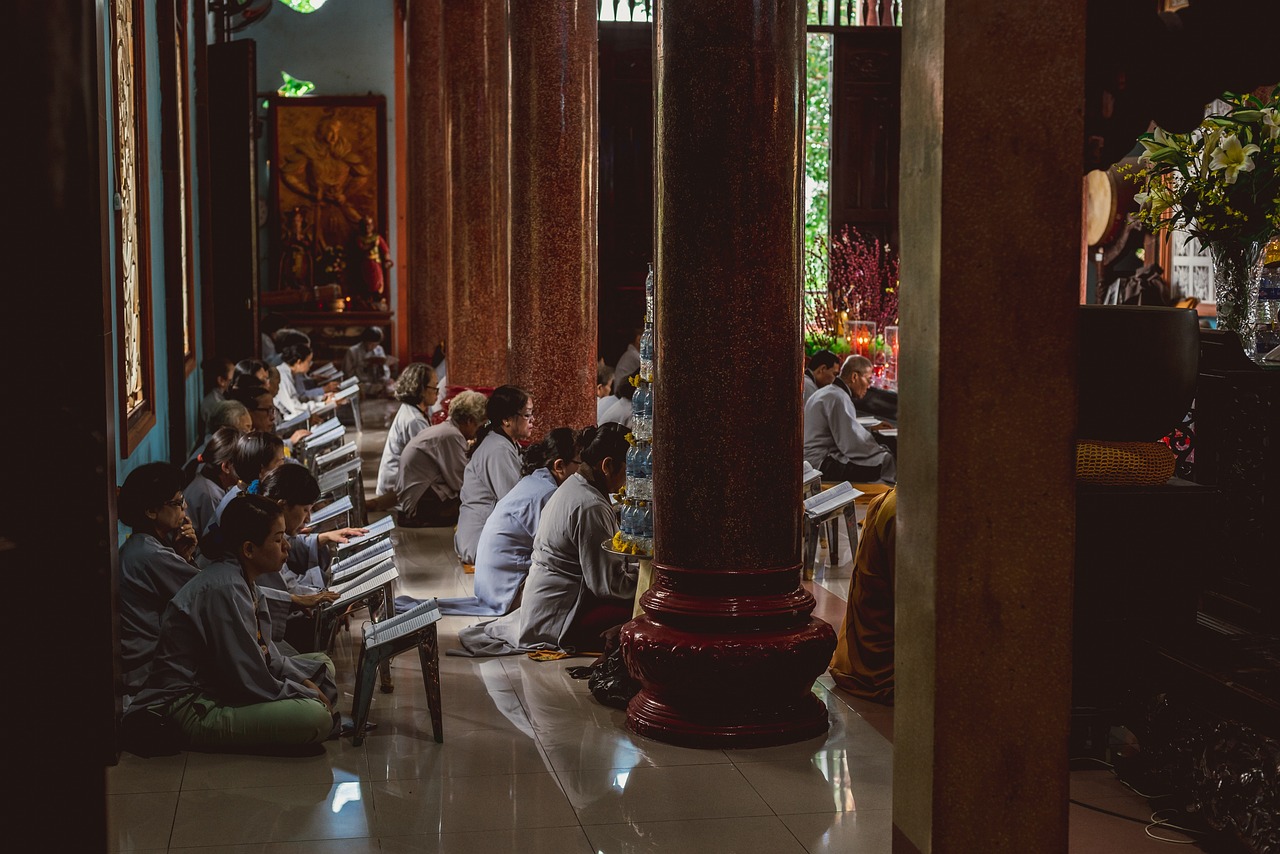
Preservation of Traditions
Preservation of traditions through art is like safeguarding the roots of a tree that nourishes the entire cultural ecosystem. Just as a tree needs its roots to remain strong and grounded, cultural traditions rely on art forms such as music, dance, and visual arts to maintain their essence and pass them down through generations. These art forms act as vessels that carry the stories, rituals, and customs of a society, ensuring that the fabric of tradition remains intact amidst the winds of change.
Imagine a vibrant tapestry woven with threads of tradition, each thread representing a unique aspect of a community's heritage. Through music, ancient melodies are preserved, echoing the voices of ancestors long gone. In dance, intricate movements tell tales of love, war, and celebration, embodying the spirit of a culture. Visual arts capture the essence of tradition in strokes of paint and sculptures, immortalizing customs and beliefs for future generations to behold.
Art not only preserves traditions but also breathes life into them, infusing old practices with new interpretations and creativity. It serves as a bridge between the past and the present, allowing traditions to evolve while staying rooted in their origins. Just as a river flows steadily, carrying the echoes of distant lands, art flows through time, carrying the essence of tradition to new horizons.
Furthermore, the preservation of traditions through art fosters a sense of belonging and continuity within communities. It creates a shared cultural identity that binds individuals together, creating a sense of unity and pride in their heritage. Through art, traditions are not just preserved but celebrated, serving as a beacon that guides future generations towards their cultural legacy.

Global Influences
Art has played a significant role in shaping cultural narratives throughout history. This article explores how art influences and reflects societal values, traditions, and beliefs, contributing to the rich tapestry of cultural heritage.
Artistic exchanges between different cultures and regions contribute to the diversification and enrichment of cultural narratives, fostering cross-cultural understanding and appreciation through shared creative expressions. When artists from diverse backgrounds come together, they bring unique perspectives and experiences, blending them to create artworks that transcend geographical boundaries. These collaborations not only showcase the beauty of cultural diversity but also highlight the universal themes that connect humanity. Through art, individuals can explore unfamiliar cultures, gain new insights, and develop empathy for others, ultimately contributing to a more interconnected and harmonious global community.
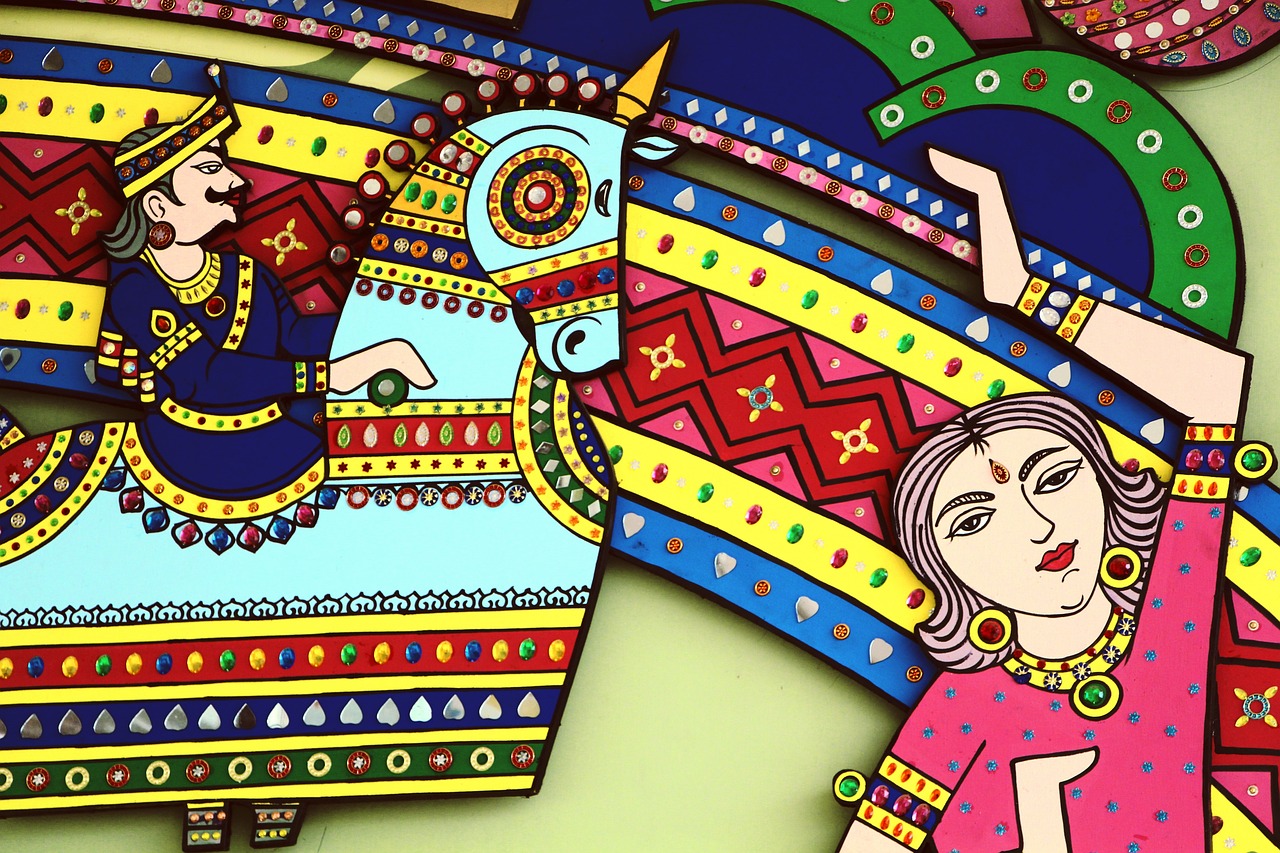
Political Symbolism
Art has played a significant role in shaping cultural narratives throughout history. This article explores how art influences and reflects societal values, traditions, and beliefs, contributing to the rich tapestry of cultural heritage.
Art serves as a powerful tool for individuals and communities to express their unique identities, values, and experiences, shaping cultural narratives through visual representations and symbolism.
Artifacts and artworks provide insights into past civilizations, documenting historical events, traditions, and societal norms that contribute to the collective cultural narrative of a society.
Artists often use their creative expressions to critique social issues, challenge norms, and provoke thought, influencing cultural narratives by highlighting important societal conversations and perspectives.
Art forms such as music, dance, and visual arts play a vital role in preserving and passing down cultural traditions, ensuring that historical practices and narratives are maintained and celebrated.
Artistic exchanges between different cultures and regions contribute to the diversification and enrichment of cultural narratives, fostering cross-cultural understanding and appreciation through shared creative expressions.
Art has been used as a powerful tool for political messaging and activism, shaping cultural narratives by visually representing ideologies, movements, and resistance against social injustices.
Art initiatives and projects often engage communities in creative processes, empowering individuals to contribute to the cultural narrative of their society through collaborative artistic endeavors and storytelling.
Artistic movements and trends reflect the evolving perspectives and values of a society, influencing cultural narratives by challenging traditional beliefs, reshaping identities, and fostering cultural innovation.
Q: How does art influence cultural narratives?
A: Art influences cultural narratives by reflecting societal values, critiquing social issues, preserving traditions, and fostering cross-cultural understanding.
Q: Why is political symbolism important in art?
A: Political symbolism in art is important as it can visually represent ideologies, movements, and resistance against social injustices, shaping cultural narratives and sparking important conversations.
Q: How do artistic movements impact cultural narratives?
A: Artistic movements impact cultural narratives by challenging traditional beliefs, reshaping identities, and fostering cultural innovation, reflecting the evolving perspectives and values of a society.

Community Engagement
Community engagement through art initiatives is a dynamic process that fosters collaboration and creativity within societies. By involving individuals in artistic endeavors, communities can collectively shape and contribute to the cultural narrative of their society. Through collaborative projects, storytelling, and visual expressions, community members can share their diverse perspectives and experiences, creating a vibrant tapestry of cultural heritage.
Art projects often serve as platforms for dialogue, reflection, and connection, bringing people together to explore shared values and traditions. These initiatives not only promote cultural exchange but also empower individuals to voice their stories and identities through various artistic mediums. By engaging with the community, artists can inspire collective action, promote social cohesion, and celebrate the richness of cultural diversity.
Furthermore, community engagement in the arts can lead to the revitalization of public spaces, the preservation of local heritage, and the empowerment of marginalized voices. Through participatory art projects, individuals of all backgrounds can contribute to the creation of meaningful narratives that reflect the essence of their communities. This collaborative approach not only strengthens social bonds but also enhances the sense of belonging and pride within neighborhoods and societies.
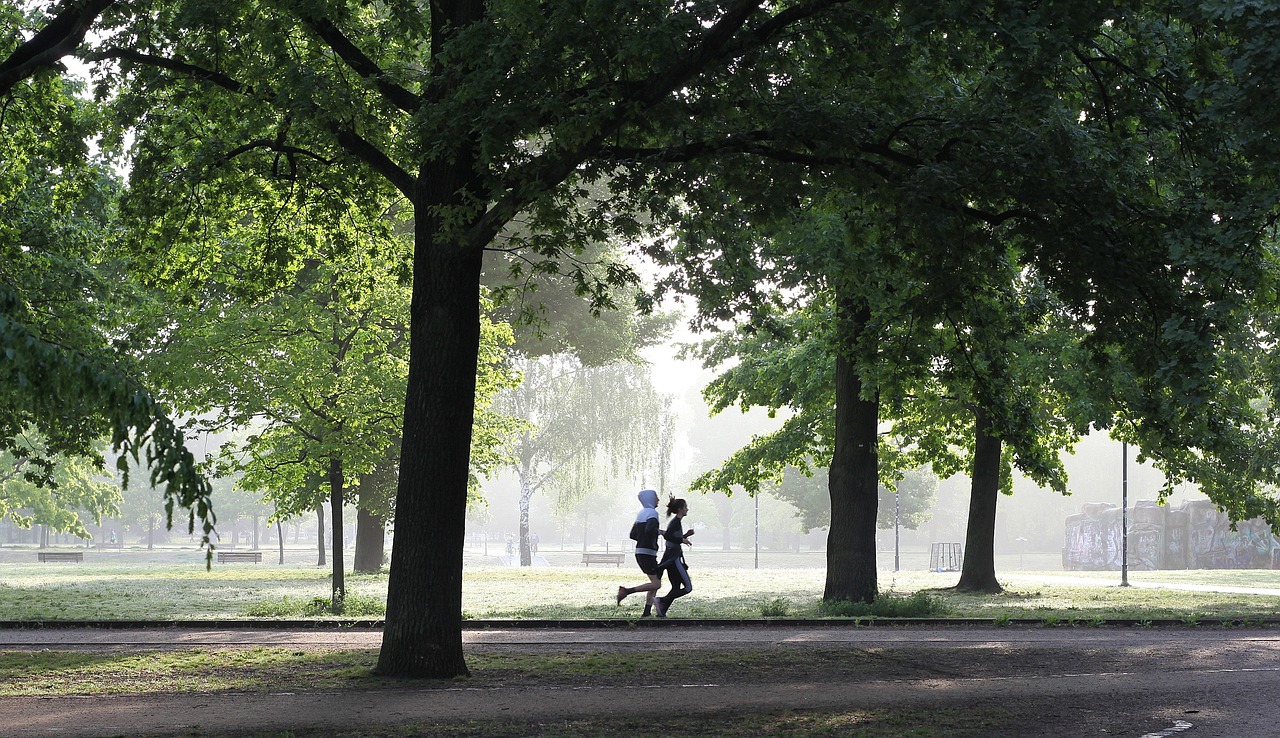
Evolution of Perspectives
Artistic movements and trends have always been at the forefront of shaping cultural narratives by challenging traditional beliefs, reshaping identities, and fostering cultural innovation. Through the lens of art, societies have witnessed the evolution of perspectives over time, reflecting the changing values and ideologies of different eras.
One of the remarkable aspects of the evolution of perspectives through art is the ability to capture the zeitgeist of a particular period. Artists often serve as cultural mirrors, reflecting the hopes, fears, and aspirations of society through their creative expressions. Whether it be the Renaissance period's celebration of humanism and beauty or the avant-garde movements of the 20th century pushing the boundaries of artistic norms, each era leaves a unique imprint on the cultural narrative.
Moreover, art has the power to challenge societal norms and provoke critical thinking, leading to paradigm shifts in how individuals perceive the world around them. By pushing boundaries, questioning authority, and challenging the status quo, artists have been instrumental in driving social change and shaping the cultural landscape.
Additionally, the evolution of perspectives in art is closely intertwined with technological advancements and globalization. The digital age has revolutionized the way art is created, shared, and consumed, leading to a fusion of traditional and contemporary artistic practices. Artists today have a global platform to showcase their work, allowing for a diverse exchange of ideas and perspectives across borders.
Ultimately, the evolution of perspectives through art serves as a testament to the ever-changing nature of human experience and the constant quest for self-expression and understanding. As artists continue to push boundaries, challenge conventions, and redefine artistic norms, the cultural narrative evolves, reflecting the dynamic interplay between tradition and innovation, history and modernity.
Frequently Asked Questions
- What is the significance of art in shaping cultural narratives?
Art plays a crucial role in shaping cultural narratives by reflecting societal values, traditions, and beliefs. It serves as a powerful tool for expressing identity, documenting historical reflections, critiquing social issues, preserving traditions, and engaging communities in creative processes.
- How does art contribute to the preservation of cultural traditions?
Art forms such as music, dance, and visual arts play a vital role in preserving and passing down cultural traditions. They ensure that historical practices and narratives are maintained and celebrated, contributing to the rich tapestry of cultural heritage.
- Can art influence global perspectives and cross-cultural understanding?
Absolutely. Artistic exchanges between different cultures and regions enrich cultural narratives by fostering cross-cultural understanding and appreciation. Through shared creative expressions, art contributes to the diversification of cultural narratives and promotes global influences.












